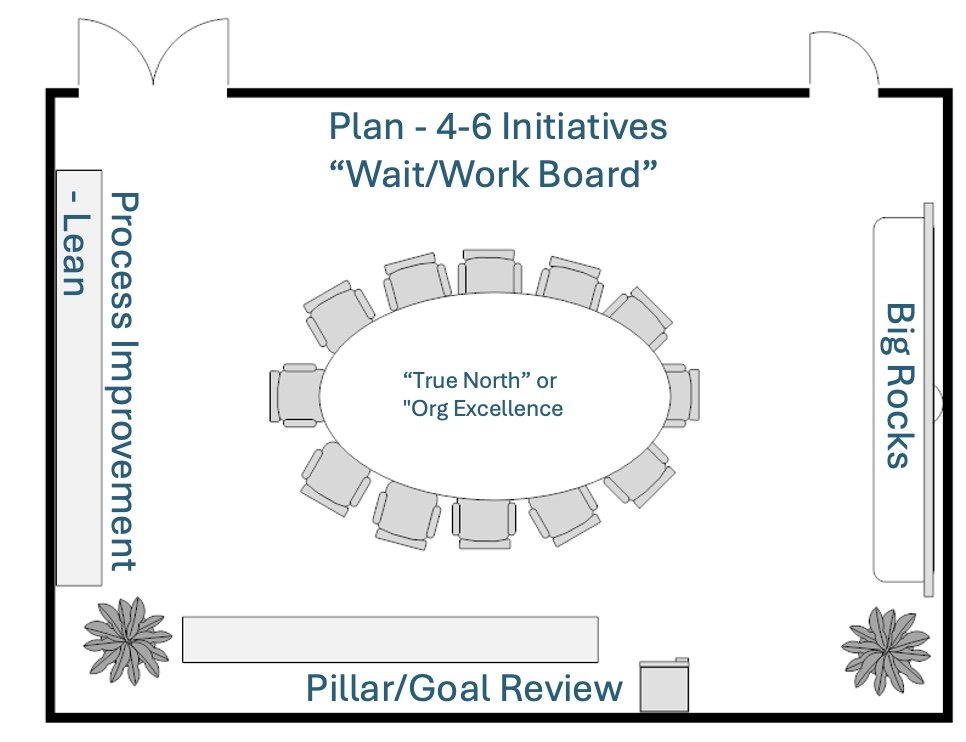Identifying and Eliminating Waste in Healthcare - A Lean Process Improvement Analysis
The implementation of Lean Process Improvement methodologies in healthcare organizations has become increasingly critical as institutions seek to enhance both patient experience and employee satisfaction. This article examines the eight fundamental forms of waste identified through Lean methodology and their specific manifestations in healthcare settings, with particular emphasis on their impact on patient care quality and staff efficiency.
Managing People, Process, and Plan - A Systematic Approach to Organizational Success
In many healthcare organizations, the key to achieving success lies in effectively managing People, Process, and Plan. To truly harness this triad, it requires a disciplined, structured approach that keeps the entire team aligned with the organization’s mission, strategic goals, and improvement initiatives. One highly effective method for maintaining this alignment and keeping progress on track is what I call the "Around-the-Room Review."
This blog will explore how to set up a structured review process by utilizing the physical layout of a room to track progress and address key strategic priorities in a systematic way.
Creating Synergy Between People and Process: Using Lean to Improve Emergency Department Efficiency and Patient Experience
Emergency departments (EDs) are a pivotal point of entry for patients requiring urgent medical attention, making ED efficiency a critical metric for hospitals. The Centers for Medicare & Medicaid Services (CMS) developed several performance measures to track how well hospitals manage patient flow, including the measure OP-18b: the median time from emergency department arrival to emergency department departure for discharged patients. This measure, while commonly used as a benchmark for time-based performance, is more than just a number. It reveals opportunities for improving patient flow, reducing bottlenecks, and enhancing overall patient experience through effective teamwork and process optimization.
By leveraging Lean Process Improvement principles, hospitals can reduce inefficiencies and enhance coordination between departments, allowing patients to move more seamlessly through the emergency department. But achieving these results requires more than just good processes—it requires a synergy between the people working at the front lines of patient care and the processes designed to streamline their work. This article explores how a thoughtful combination of “People” and “Process” can help hospitals not only meet the CMS OP-18b standard but also significantly improve the quality of care and the patient experience.
Strategy and Lean Process Improvement for Healthcare Success
Strategic planning is essential for organizations looking to not only survive but thrive. With constant changes in regulations, technology, and patient expectations, healthcare institutions must adopt a proactive approach to stay competitive. At Frontier Strategy Partners, we believe in guiding healthcare organizations through a strategic process that not only aligns with industry best practices but also incorporates proven methodologies from thought leaders like Michael Porter, and Roger Martin & A.G. Lafley, while integrating Lean process improvement principles to drive sustainable growth and operational efficiency.




